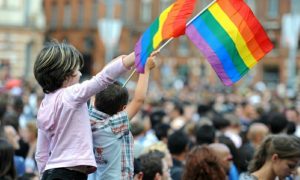7 Great Ways to Make Your Event LGBT-Friendly
June marks the beginning of LGBT Pride Month with pride festivals and LGBT friendly events being celebrated across the globe. If you organize events, from corporate conferences to annual association meetings, chances are you’ve come across LGBT issues without even knowing it. Creating a safe and open event environment where everyone feels welcome isn’t just the right thing to do, it’s also better business. Making your event inclusive benefits the individual by creating an environment that reduces stress, allowing them to develop better relationships with colleagues, which affirms confidence and commitment to their organization and your event.
Being LGBT friendly not only benefits individual experience, it also attracts some fairly lucrative business opportunities. In 2013, the LGBT community made up 5%-10% of the global talent pool with an adult population buying power of about $830 billion according to Witeck Communications. Many of the tips and tricks outlined below were distilled from How to be LGBT Friendly, which is a document created and produced by Leicester LGBT Centre and Prism.
While there are vast differences between personal experiences and the social and global understanding of how different groups choose to self-identify, How to be LGBT Friendly outlines an important commonality: “we are united by one thing – organizations and individuals often discriminate against us, ignore our needs and aspirations or even deny our existence.” It is for this reason alone that everyone should make a conscious effort to be inclusive and open to all walks of life.
The following seven tips are for event professionals who are interested in leading their industry in creating LGBT friendly events.
- Display and publicize a non-discrimination statement online as well at your event. This could be your own statement or your client or organization’s diversity policy. For example: “Our organization provides equality of services and care to everyone, regardless of people’s age, disability, gender, gender identity, race, religion or belief or sexual orientation.”
- If you’re documenting sex or gender at your event always include an opt-out option and ensure confidentiality to all staff and attendees unless they personally choose to be ‘out.’ For example, if you’re planning an incentive trip and you’re booking men’s and women’s massages, make sure you leave a space for those who identify outside the checkbox. Confidentiality may also be a matter of personal safety rather than purely about privacy.
- Explore ways to creatively integrate LGBT issues into your event rather than separating them out or having them as add-ons. For example, including a short openness and acceptance policy as part of your introductory program or session will set a precedent and appear as part of the administration content.
- Implement zero tolerance for racist or homophobic language at your event.
- Provide training for all staff and volunteers on LGBT issues and encourage them to enforce the event’s zero-tolerance policy for negative comments, slang or jokes about the LGBT community.
By incorporating these changes to create an LGBT friendly event, not only is it great karma and better business, but it also sets an example for attendees and other events. Laws, legislation and policies are on the rise in favor of LGBT acceptance and inclusion, but that’s only the beginning. The real change will happen as a result of strong leadership in the event industry and beyond. LGBT Pride Month affords so there has never been a better time to be an advocate for social and corporate change regarding gender.
What’s Next:
